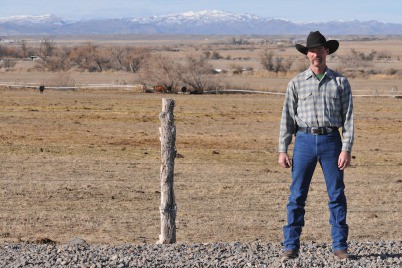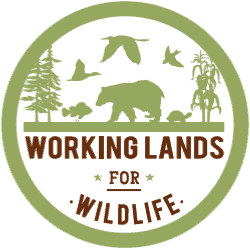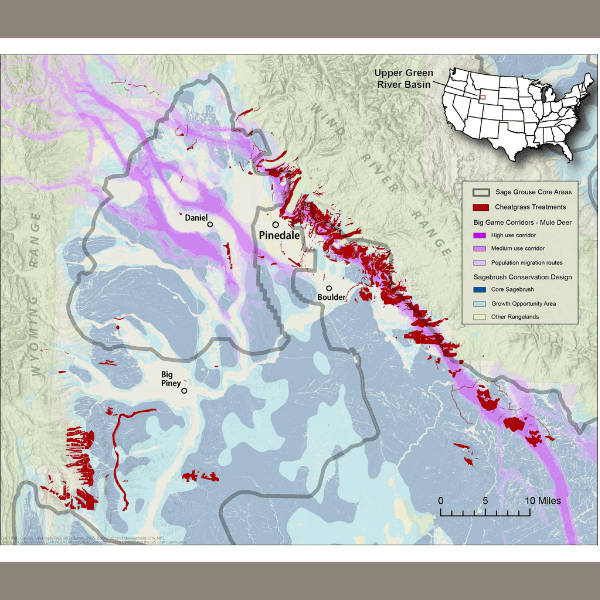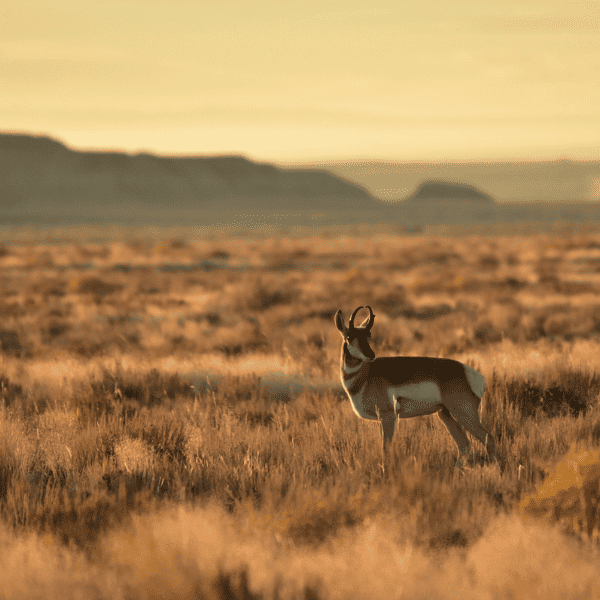
Removing Junipers Benefits Wildlife and Range in Owyhee County
When Owyhee County rancher Chris Black walked into the Mountain Home Service Center last November, he seemed to have read my mind. He’d been high on my list to contact about planning a habitat project with the Sage Grouse Initiative (SGI), a highly targeted and science-based landscape approach to enhance and conserve rangelands for sage grouse.

Ground-breaking Watershed-scale Grazing Project, Utah
July 29, 2013
“Beltway Beef” Features Sage Grouse Initiative & Colorado Cattlemen’s Agricultural Land Trust
August 30, 2013
By Joshua White, Range & Wildlife Conservationist, Pheasants Forever/NRCS
208.590.9527 | jwhite@pheasantsforever.org
When Owyhee County, Idaho, rancher Chris Black walked into the Mountain Home Service Center last November, he seemed to have read my mind. (That’s Chris on the right.) He’d been high on my list to contact about planning a habitat project with the Sage Grouse Initiative (SGI), a highly targeted and science-based landscape approach to enhance and conserve rangelands for sage grouse. It works by helping ranchers improve and conserve their lands for wildlife and for livestock across 11 western states. Since the Natural Resources Conservation Service (NRCS) launched the Initiative in 2010, more than 700 ranchers have enrolled and hundreds of partners have participated.
Black’s property is one of the remaining pieces of the puzzle needed to connect a large stretch of NRCS juniper removal and grazing projects to a substantial breeding population of sage grouse, part of the larger Great Basin Population of sage grouse.
As a range and wildlife conservationist serving in a partnership with the NRCS and Pheasants Forever, I assist landowners like Black to carry out the SGI on the ground. Prior to moving here from South Dakota last March, I had put my wildlife ecology degree to work on projects for waterfowl and pheasants, but I was a novice of the Idaho landscape and sage grouse. Fortunately, the NRCS and partnering agencies had laid the foundation for the Sage Grouse Initiative. Through working with our participating landowners and area staff, I quickly grew to appreciate the importance of ranching to good wildlife habitat.
Currently, through the SGI, ranchers have treated approximately 3,400 acres of western junipers and are slated to remove another 13,000 acres in the upcoming years on rangelands in Owyhee County, Idaho (reported acreages are not exact). Through partnerships between participating ranchers, the Owyhee Sage Grouse Local Working Group, Pheasants Forever, Idaho Department of Fish & Game, U.S. Fish and Wildlife Service, Idaho Department of Lands, The Nature Conservancy, the Bureau of Land Management, and the NRCS, these successes will continue in Owyhee County. Linking these restored sagebrush-steppe habitats to existing sage grouse populations is the next step.

Josh White (left), Sean Black (center), and Chris Black (right) discussing juniper treatment area and project goals while on a January habitat tour of the property via snowmobile.
That’s where willing ranchers like Black are vital for success. The Black family settled in southern Idaho and northern Nevada in 1875. Black, a 5th generation rancher and model land steward, has been a long-time advocate for healthy grazing lands, ranching and wildlife. Black was the past president of the Owyhee Cattlemen’s Association, is the Chairman of the Idaho Rangeland Resource Commission, and a county supervisor for the Bruneau River Soil and Water Conservation District. He has earned awards from the Society of Range Management for Excellence in Range Management and the President’s Award, as well as the 2008 National Bureau of Land Management Rangeland Stewardship Award.
In 1992, Black adopted a holistic style of grazing to employ short duration, high-intensity grazing management. He has witnessed a substantial improvement in the health of his range, higher yearly gains on his cattle, and a positive response by sage grouse in his region.
“The sage grouse, as other wildlife, have really have benefited from our grazing strategy,” Black told me as we chatted about his new project. “The grouse usually follow our rotation, and use areas near some of our reservoirs that have been grazed for lekking (breeding) purposes.” Under Black’s grazing strategy, the range has time to rest after the cattle have moved through, providing an ideal location for insect production for foraging grouse.
Black also noted that in drought years such as 2012, private lands are extremely important for the bird because that is where water is located. Black noted several hundred birds congregated on his deeded riparian areas during fall this year versus years when water was better dispersed across the landscape.
The key for both wildlife and livestock in this part of the country is water, he stressed. In drought years such as 2012, this region will like never meet what most scientific literature suggests as ideal grouse habitat, yet Black’s deeded property and adjacent allotments support a large, stable population of grouse, largely due to his prescribed grazing system and distribution of water.
Besides managing his cattle herd, water and range to support a healthy grouse population, Black partnered with U.S. Fish & Wildlife Service to construct 13 ponds for the Columbia Spotted Frog, a candidate species for listing under the Endangered Species Act. In one year there was documented breeding frogs in the ponds.
With that success under his belt, Black is ready to tackle the junipers encroaching into the meadows and associated uplands that were once treeless landscapes supporting sage grouse and livestock.
“Traditionally, we used fire to suppress encroachment of junipers, but that just hasn’t been feasible for the past 15-20 years with the current restrictions on fire”, said Black.
Black’s property borders other juniper removal projects that are planned or being implemented. Adding his rangelands will open up a large expanse of riparian areas and meadows as well as associated uplands.
Josh White (left), Sean Black (center), and Chris Black (right) discussing juniper treatment area and project goals while on a January habitat tour of the property via snowmobile.
Past fire management of encroaching junipers has helped maintain a quality forage base on Black’s property. Currently, most of the planned treatment area is in phase 1, which consists of a low density of junipers and a healthy grass, forb, and shrub understory; this provides an ideal location to implement juniper removal where the ground has great potential for restoration. In contrast, larger trees can consume increased quantities of water (e.g., >40 gallons/day) and outcompete grasses and shrubs from growing beneath them. Fire suppression over the past century allowed thick stands of junipers to take hold over a large region. The trees continue to expand into some of the best remaining sage grouse habitat left in Idaho. Conifers reduce the quality and quantity of habitat for sage grouse and other sagebrush obligate species.
Today, ranchers and partners are helping the land heal. Removing phase 1 and 2 junipers infringing upon areas of highest sage grouse importance offers the highest return on the conservation dollar. Although, cutting junipers is not a one-time fix, it is part of the larger toolbox to manage these systems in the absence of fire. The price tag can be high and the need to come back with follow up treatment is crucial for the investment to pay off. Black appreciates the financial support of the Sage Grouse Initiative funds, while looking down the road to future needs. He believes re-introducing fire into some of the higher elevation rangelands is a must for the long-term health of the land.
Developing a project that works for Chris Black is part of a landscape-level effort across private and public boundaries to maintain the vast areas sage grouse depend upon for nesting, brood-rearing, and over-winter purposes. Every rancher like Black is making a difference. Every partner helps. Putting the right conservation practices to work in the right places is our best bet for the future of sage grouse, and for ranching as well.




